Keeping it Real: The Importance of Authenticity in Your Child’s Writing Life
If you want your students to care about writing, give them writing projects that actually matter.
If you want your students to care about writing, give them writing projects that actually matter.
Parents, I have an assignment for you. I want you to plan out a week’s worth of meals for your family, taking into account each family member’s likes and dislikes. Write out the grocery list, and be careful, because I’ll be checking to see that you didn’t forget anything and nothing is misspelled. When you’re finished, just file it away somewhere. We were never going to actually shop for the meals or cook the meals. I just wanted to see if you could do the assignment.
Any takers?... No? I don’t blame you.
Many kids feel the same way when they’re made to write without an audience beyond the assigning adult on the receiving end of their work. That’s why we need to seek out opportunities for authentic writing for our young writers. Authentic writing refers to writing that is done for a real purpose and for a real audience. Authentic writing is intrinsically motivating and helps to provide kids with a sense of the potential power of having strong writing skills.
Here are five suggestions for adding some authenticity to your homeschool’s writing program:
1. Do Business.
Have your student write a letter or email to a business. The content can either be full of praise for a job well done or dismay at a poor experience. This is a great time to talk about tone and professionalism. One of the best things about this assignment is that more often than not, kids receive replies to their missives. When I’ve done business letter assignments with classes before, students have even received autographed photos, coupons, and letters signed by CEOs. Talk about gratifying!
2. Review.
Amazon, Yelp, Google, and Rainbow Resource are just a few of the abundant opportunities online for leaving reviews that will be read by a wide audience. Use the existing reviews rated as “most helpful” as mentor texts to help your student draw conclusions about what makes a good review.
3. Blog.
Whatever your young writer chooses as the focus of his or her blog, it’s a great opportunity to share something with friends and family.
4. Slam or Snap.
Book clubs aren’t the only literary reason to gather people together. Consider hosting a poetry café or poetry slam with other homeschooling friends. Everybody gets to share an original poem.
5. Serve.
Can you find a way to serve your community via writing? You might consider teaming up with a local nursing home or assisted living community to record the life experiences of elderly people. Kids stand to learn so much from seniors who have experienced the history they’re learning about, and families will no doubt be grateful to receive a written record of their loved ones’ stories.
Curriculum Review: Michael Clay Thompson’s Language Arts
Rebecca loves the nerdy grammar fun of Michael Clay Thompson’s Language Arts. It may not be for everyone, but it’s definitely for word lovers.
Michael Clay Thompson’s language arts curriculum is the sort of treat we homeschool moms and dads enjoy as much as our kids. In my experience, too few people know about this gem of a resource, and I’m excited to have the chance to share it here with you.
Thompson is no ordinary teacher, and this is not your run-of-the mill curriculum. Seeking to introduce students to English language arts in its highest forms, Thompson writes eloquently, with frequent literary references. My 11-year-old son has noticed, “This is like taking a class with a professor.”
Those looking for a secular classical resource to teach language arts will be especially appreciative of Thompson’s approach. Vocabulary lessons based on Latin and Greek stems are far more interesting than those normally found in traditional text books. Classical literature is referenced throughout the program so you’ll want to keep a pen and paper handy just to jot down all the reading suggestions. Thompson’s program might serve as launch pad that sparks your child’s interest in classical history as well.
Thompson endorses the Socratic method of teaching—asking probing questions that encourage students to unearth answers themselves. Throughout the teaching manuals, he provides tips for parents that encourage lively, organic discourse, and critical thinking skills.
For the purposes of this review, I looked at the complete set of texts for Level Two which is written for the 4th grade and up. In all, there are 4 levels:
Level 1 (for 3rd grade and up): Grammar Island, Practice Island, Building Language, The Music of the Hemispheres, Sentence Island
Level 2 (for 4th grade and up): Grammar Town, Practice Town, Caesar’s English I (or CEE 1), Building Poems, Paragraph Town
Level 3 (for 5th grade and up): Grammar Voyage, Practice Voyage, Caesar’s English II (or CEE 2), A World of Poetry, Essay Voyage
Level 4 (for 6th grade and up): Magic Lens 1, 4 Practice 1, The Word Within the Word 1, Poetry and Humanity, Advanced Academic Writing 1
Each level contains texts that can be ordered separately or, for a small savings, as a bundle. Those who purchase the full set will have a comprehensive language arts program that teaches grammar, vocabulary, writing, and poetry at an accelerated level. Thompson designed this curriculum with gifted students in mind; however, by adjusting the suggested grade levels, this program could be adapted for a wider range of motivated learners.
To better acclimate to this program’s unique style, some families might find it helpful to start at the beginning of the series. While each level could serve as a stand-alone program, the material is cumulative and diving into its middle may be difficult for learners accustomed to a more conventional curriculum.
Each student book has a separate accompanying teacher’s manual. Families wishing to save a few dollars could do so by purchasing only the teacher’s manual which includes the student text in its entirety. Much of the information for teachers appears in the back of the teaching manuals. Although text boxes for parents appear throughout the guides, they are small and unobtrusive; most students could still read the books without distraction or difficulty.
Formatting in each book is straightforward with lots of white space and stylized fonts. At first glance, the slim texts might appear to lack substance. However, upon closer inspection, most students will find the content on these pages to be generous, dense, and rich with detail. Photographs of art and important quotations are sprinkled throughout each text and form a significant portion of each lesson.
For those wishing to further enhance their child’s experience, an optional literature component can be purchased separately. Level Two takes a look at the novels Alice’s Adventures in Wonderland, Peter Pan, and The Wind in the Willows. Each book is reproduced to include an examination of poetic techniques, four-level analyses of interesting grammar, and a look at writing strategies. Vocabulary is reviewed at the end of each page. By working through these stories, concepts studied in Level Two’s textbooks can be reinforced in the context of compelling literature. The accompanying parent manual features commentary from Thompson about each novel, advanced vocabulary words, discussion questions, activities, and guidance to support students’ efforts practicing academic writing.
The Royal Fireworks Press website features free videos and sample readings from the books, along with other materials to support parents’ teaching efforts.
Pricing details vary depending on how items are purchased. The complete Level Two homeschool package, which does not include the literature trilogy mentioned above, is $260. If ordered on the publisher’s website, the cost is $225. The Alice, Peter, and Mole Trilogy Set and Parent Manual is an additional $40. For more pricing information, visit the Royal Fireworks Press website.
Not every student will enjoy this program. Some learners may consider the elevated, formal style of prose stuffy or pretentious and the level of detail too difficult. This is a curriculum for a family in love with language and all its complexity who wants to explore this subject in depth. If that sounds like you, this is a curriculum worth checking out. Enjoy!
Our Morning Routine
Aminata and Malcolm have discovered that a purposeful morning routine is the perfect start to their homeschool day.
How you start your homeschool day sets the tone for everything else. There’s no one right morning homeschool routine — but there’s a right routine for your family.
It’s so exciting to be writing about homeschooling kindergarten through fifth grade for home/school/life. My 6-year-old son Malcolm and I have just started our homeschool journey together. I am drawn to Waldorf-style homeschooling, so we are doing lots of art and hands-on activities — and we have established a morning routine that has become our favorite part of the day.
Morning time is a Waldorf idea. I don’t use the Oak Meadow curriculum because I am not sure we are curriculum people, but a friend lent me The Heart of Learning, and I felt really drawn to the idea of the morning routine. We follow our own rhythms for waking up and making our morning meal and preparing for the day. Since we don’t need to be anywhere most days, we don’t bother with an alarm clock but follow the natural rhythm of our bodies instead. When we’re ready to move from waking-up time to learning time, we light a candle together to mark the transition and recite our morning verse together:
Good morning dear earth Good morning dear sun
Good morning dear flowers and fairies, every one
Good morning dear beasties and birds in the tree
Good morning to you
Good morning to me
We stretch down to the ground as we say good morning to the earth and up to the sky as we greet the sun so that we move our bodies to match the words of the rhyme.
We then collect a scoop of birdseed and walk outside to scatter it in our backyard. We check the thermometer and rain gauge on our back porch and observe the sky together. When Malcolm is older, he will write these observations down in our Weather Book, but for now, I am the record keeper. Back inside, Malcolm crayons a picture of the morning sky in the Weather Book, and we enjoy trying to find just the right shade of blue or gray together. Someday, I would like to collect a year’s worth of drawings into a Sky Book. I am learning, though, that I can’t think too much about the future during morning time because morning time is about being in the moment. Malcolm is good at this already, but I am still learning.
We choose a book from our reading basket together every Monday, and we read the same book together every morning that week. At first, the idea of reading a book over and over again seemed like it would be boring. I was afraid my active little boy would not have the patience to keep listening to the same story. We’ve discovered, though, that his attention span actually stretches the more times we read a story. By the end of the week, he is more transfixed and focused than he was the first time we read it.
“I am learning, though, that I can’t think too much about the future during morning time because morning time is about being in the moment. Malcolm is good at this already, but I am still learning.”
After our story, we sing together while we do handwork. Malcolm is finger-knitting, and helping him takes all my patience and concentration. If I try to do something else — sneak in some reading of my own or start lunch preparations or even just daydream about our afternoon plans — this part of the morning never goes well. I must be fully present. This routine is teaching me that I have not always been as present with my son as I believed myself to be. I am learning to be with him where he is, and I am humbled by how challenging it has been for me to do this. The songs we sing are simple songs about the seasons or the outdoor world—most of them are from Channa A. Seidenberg’s I Love to Be: Songs in the Mood of Fifth. I did not grow up with many little songs, and so I find this book a useful resource.
When we are ready to move on with the day, we return to our candle, which is still flickering merrily. We watch the little flame dance for a few minutes, and then, when he is ready, Malcolm leads us in our closing verse:
Round and round the earth is turning,
Turning always into morning,
And from morning into night.
He blows out the candle with a big burst of air and laughs as the orange flame turns into white smoke. Morning time is over, and we are ready for whatever adventures the day holds for us in our homeschool life.
Aminata is the author of HSL’s It’s Elementary column, focused on homeschooling the early years. This column was originally published in the fall 2018 issue of HSL.
10 Family Habits that Foster Lifelong Readers
A love of reading comes naturally for some kids and not-so-naturally for others, but you can do a lot to make your home a space where reading is an important part of everyday life.
A love of reading comes naturally for some kids and not-so-naturally for others, but you can do a lot to make your home a space where reading is an important part of everyday life.
1. Curate Book Baskets and Shelves
Especially for younger kids and reluctant readers, walking into a library or confronting a full bookshelf can be intimidating. A sparse bedroom shelf lined with books whose covers face out can help a child locate a book for independent reading time that matches up with that week’s interests. Curated book baskets are wonderful for giving kids choices within limits that help reading seem friendlier.
A few book basket ideas:
Teething-friendly books for the youngest readers
A selection of readers — any of which would work for your emergent or beginner reader’s current level
Books about trucks, puppies, bugs, or ponies — whatever your child’s current interest
A selection of books that fit bathroom reading criteria — books divided up into short selections that are funny or interesting (like comics)
A basket of WWII historical fiction choices to complement WWII history study
2. Never Leave without a Book
Richard Larson, a professor who studies queueing theory at MIT, says that the average person spends a cumulative 1 to 2 years of life waiting in lines. Startling statistics aside, I think we can all agree that we spend lots of time waiting — waiting at the dentist, waiting for takeout food, waiting in the car for a train to pass. Sure, that time could be spent playing Candy Crush or scrolling through Facebook (or picking a fight with your sibling), but wouldn’t it be better spent reading? Make it a rule that everybody leaves the house with something to read.
3. Celebrate with a Bookstore Visit
You may think I’m a monster, but I told my kids at the outset that there is no Tooth Fairy. Of course, they still want to cash in on their discarded teeth, though, so I like to offer them a trip to the used bookstore instead of money. While we’re there, I’ll offer to pay for a few 75 cent readers of their choosing. There are a million little things in life that we celebrate as families. It’s wonderful to attach some of those small celebrations to books.
4. Institute the Weekly Library Visit
Make Library Day a thing that happens every week on the same day. Not only will regularity make it a valuable part of the routine, but it will also help you stay out of trouble with overdue fines.
5. Subscribe to Magazines
We adults get inundated with mail, but getting mail is so special to kids. Tap into that feeling of specialness and create positive connotations with reading by getting a magazine subscription for each child.
6. Make Readaloud Time Part of the Routine
Readaloud time is one those things that’s easy to let slip past, so we need to build it into our daily routines. At our house, we have two read-aloud times. We start the school day with historical fiction related to our unit of study and read fiction that’s more focused on entertainment value at bedtime.
7. Make Independent Reading Time Part of the Routine
We all want our kids to spend time reading, but sometimes we forget to make time for it to happen. Just like read-aloud time, we have to make independent reading time a family norm that has its own space set aside in the day.
8. Listen to Audiobooks in the Car
I will admit that I resisted audiobooks for a long time. I didn’t have the right technology in my car, the library didn’t have the best selection, blah, blah, blah. I actually decided to suck it up and give audiobooks a try in the name of taming backseat squabbles. It worked to a degree I didn’t even imagine possible. Oh, and now we’re all digesting about two more quality books per month than we used to. Seriously, try audiobooks even if only for the peaceful car rides.
9. Read and Talk about Reading
This is directed toward the adults. If you want your kids to believe that reading is important and worthwhile, you have to model it. Make sure that kids have opportunities to see respected adults of both genders reading and valuing reading.
10. Geek Out as a Family about a Story
Later this summer, we’re (finally) visiting The Wizarding World of Harry Potter. Obviously, the day at the theme park will be magical in all senses of the word, but leading up to it, we are having so much fun immersing ourselves in the story together by reading the beautiful illustrated editions of the books, coloring Harry Potter coloring books, crafting wands out of mismatched chopsticks, watching the movies, and assembling Harry Potter jigsaw puzzles. Geeking out over a story as a family goes beyond just telling your kids that reading is important. It shows them that the world of the imagination is important, that reading is cool, that they can get lost in stories even when they grow up, too.
Teaching Literature-Based History without a Curriculum
Truly, the biggest hurdle to cobbling my own history curriculum together has been organizing the resources in such a way that I know where they are, I remember all of the ideas that I had, and I don’t leave anything out.
“Truly, the biggest hurdle to cobbling my own history curriculum together has been organizing the resources in such a way that I know where they are, I remember all of the ideas that I had, and I don’t leave anything out.”
I must have filled in so very many history worksheets as a kid sitting at a desk with a textbook, but I can’t tell you much that I learned sitting in that desk. The truth is that most of the history I learned as a kid came from Bill and Ted’s Excellent Adventure and historical fiction that I found on the library shelves. For that reason, I knew that I wanted to take a literature-based approach to history with my kids.
The secular homeschooling community isn’t exactly awash in literature-based options, though. Last year when I couldn’t find anything that would work for teaching early American history to my 2nd graders, I decided to wing it. We made our way from prehistory through the colonial period, and this year in 3rd grade we’re attempting to read our way through the Revolutionary War through the Civil War. Given how many great books and resources are out there, it hasn’t been so hard to put it together myself, and, as so often happens in homeschooling, I’m learning considerably more than I knew before.
Truly, the biggest hurdle to cobbling my own history curriculum together has been organizing the resources in such a way that I know where they are, I remember all of the ideas that I had, and I don’t leave anything out.
My solution to the organization issue is creating a collection of spreadsheets for the year. I divide the year up into units, with each unit getting its own spreadsheet. This year, my spreadsheets are titled Revolutionary War, Westward Expansion, Slavery, and Civil War. Those with older children studying in greater detail may also want to divide larger units into mini-units and give them their own spreadsheets. For example, World War II might be divided into mini-units such as The Role of Women, Allies and Axis Powers, The Holocaust, The Homefront, and Military Technology.
The spreadsheet has two purposes. First, the spreadsheet serves as a comprehensive list of all of the resources I’d like to use within a unit. It includes field trips, historical fiction selections, selected activities from supplemental resources like History Pockets, nonfiction literature, videos, poems, and audiobooks.
The spreadsheet’s second purpose is to help me keep track of where things are. My columns at the top are On Hand, Library, Field Trip, and Activity. Given how many books we’ll use, it’s important to keep track of which books I have on hand at home and which books I’ll pull from the library shelves. This makes it easy, too, for putting together our list for the library. The Field Trip column serves as a visual reminder for me to make room on our calendar and take any necessary planning steps to pull off the field trip. In the Activity column, I mark the page on which the activity can be found and the acronym for the book it can be found within.
In addition to my spreadsheets, the other organizational tool that keeps my DIY literature-based history curriculum humming is a milkcrate. I’ve pulled every history resource I’ll use for the year and placed it in the milkcrate for ease of finding. It helps to avoid all of those awful times when you’re meandering around saying, “I know we have it somewhere, but I can’t find it.”
Whatever period of history you’re studying with your kids this year, I hope that these organizational tips can help you feel more in control of the sprawl that comes along with studying history with literature.
(We’re Amazon affiliates, so if you purchase something through an Amazon link, we may receive a small percentage of the sale. Obviously this doesn’t influence what we recommend, and we link to places other than Amazon.)
Finding Out: Curiosity as a Way of Learning
When you shift your focus from WHAT to learn to HOW to learn, magical things can happen.
When you shift your focus from WHAT to learn to HOW to learn, magical things can happen.
In the Northern Hemisphere, it’s caterpillar season. The leaves are bursting forth from the trees, grasses are growing taller, birds are building nests, bats are waking up and they’re looking for food for their young. My youngest child’s insect project is ramping up and we are spending more time with our hands in hedges than sitting down and holding a pencil.
When we first started home educating, I kept a mental checklist for most tasks we’d do. Running around in the park? That counts as PE or recess. Baking a cake? I’m sure that counts as math. Making bracelets? Definitely good for fine motor skills. Looking for caterpillars in hedgerows? That must be science. It felt good to think that every aspect of our lives could “count as school.”
If my five-year-old son was in school, his teachers would be helping him work on his pencil grip, form letters and understand phonics and the basics of mathematics. At home, my son only holds a pencil or pen for about 15 minutes every day. Maybe I should worry. Maybe he will never learn to write his name!
“That skill—the ability to find out is the key, for me, to being a successful learner. ”
But I don’t worry. I don’t worry at all about his writing. The reason is not that I’m ultra-confident. I’ve got all sorts of worries about my children. But when I watch my son gently lift a caterpillar from a leaf and hold it with precisely the correct amount of pressure and grip to keep that caterpillar safe from harm in his hand, I know my son has all the fine motor skills he needs to write his name. When he pulls out one of his nature books, turns to the index and asks me to look up that caterpillar’s food plant or when he opens the tablet and pulls up a document about caterpillars, I can see that he understands about letters and language and what they are intended for. He knows where to go to find out what he wants to learn. In short, he knows what he needs to do to find out. That skill—the ability to find out is the key, for me, to being a successful learner. The thing is, he knows what he wants to learn and he knows how to find out. Gradually he will arm himself with the skills to find out, perhaps by asking me for help or by figuring it out himself.
He will eventually learn to write, because he wants to find out.
He will learn to read, because he wants to find out.
He will become numerate, because he wants to find out.
I am here to mentor him, to help him learn the skills he needs, to encourage and support him when it’s hard. I want to nourish his curiosity and support him while newer and more exciting doors open to him.
I used to box-tick and think about whether what we were doing “counted as school.” Now I hardly think about school. I simply wonder what he’ll be finding out next.
My Practically Free Guide to Getting Started Homeschooling Elementary School
This is my go-to recommendation for new homeschoolers — it's designed to help you find your rhythm, build comfort with leading your students’ learning, and keep the learning going as you find your way. It’s basically a six-month, low-cost-investment guide to starting homeschooling.
Every summer, I get email from people who are trying to find the “perfect curriculum” for their brand-new homeschools, but the truth is, you probably won’t know what a perfect curriculum actually looks like for your family until you get through a few months of homeschooling. Homeschooling is partly about curriculum, but it’s also about understanding how your kids learn, what your family’s daily rhythm feels like, and what you’re actually willing to do every week to get ready for your family’s learning life.
That’s why I always recommend that new homeschoolers wait six months before making any major curriculum purchase. That’s really how long it takes most people to settle into homeschooling enough to know what you really need in a curriculum — which may turn out to be different from what you think you want when you first get started. It also lets you test-drive being a homeschool parent — which often involves different kinds of effort that new homeschoolers might expect. This sounds intimidating, but for elementary school, it’s SO EASY. This is my go-to recommendation for new homeschoolers — it's designed to help you find your rhythm, build comfort with leading your students’ learning, and keep the learning going as you find your way. It’s basically a six-month, almost-free guide to starting homeschooling. (As with all homeschool projects, you’ll have to spend money or time to get quality curriculum — this is low-cost, so it asks for a not-insignificant parent-time investment. I don’t think there’s any curriculum that’s almost free, hands-off, and a great educational choice, but two out of three isn’t bad!)
What you need:
A readaloud (You can choose any chapter book that you’re excited about, but some of my favorite starter-readaloud recommendations are: The Adventures of Nanny Piggins, The Pepins and Their Problems, The Vanderbeekers of 141st Street, or The Adventures of Pippi Longstocking, all of which are sometimes laugh-out-loud funny.)
A non-fiction book for history (There are lots of good ones, but The People Shall Continue makes a really good spine for Native American studies, A Child’s Introduction to African American History is a great take on U.S. History, or explore life in medieval times with Good Masters! Sweet Ladies! Voices from a Medieval Village. Choose one book as your focus.)
I don’t recommend buying math for the first months of your homeschool; instead, take this opportunity to test out different math options by using sample lessons. Math can be one of the trickiest curriculum buys because kids learn math in such different ways, so give your student a chance to play with several different curricula these first months. It will become clear which are better and worse fits. It will also give you an idea of what level to start with! If you spend a week on each sample lesson, this should get you through at least 10+ weeks. I’d try:
Beast Academy (this link takes you to the books, but check out the online samples, too — look for the downloads in the right sidebar of the page for the book you’re interested in)
Singapore Dimensions (click on the grade level to see the samples for that book)
Math Mammoth (the downloads are in the right sidebar)
Teaching Textbooks (scroll all the way to the bottom for the sample lessons)
Organizing your day:
Most days, start with nature journaling. Buy a notebook, and check outside to record the date, weather conditions, and one nature observation. Do an activity in The Nature Connection workbook a couple of times a week — many of them can be done spur of the moment, but a few require a little advance planning. Aim to check out one book a week from the library about a nature topic you’ve touched on, and read it together. This is pretty low-key science, so you will want to add a little more information-based science after the first semester, but it’s a good way to get into the habit of “doing science” together.
Move on to reading: Alternate history reading and literature readings so that you start with a different subject each day, and be OK with sometimes only getting through the first one.
For literature, choose five words from what you’re reading every week or two to be your “spelling words” for the week, and practice writing and defining them. Copy them every day or two to practice spelling, and see how many different ways you can use them in a sentence. Encourage your student to summarize each chapter: What happened? Your goal is to steer them in the direction of a clear, two- or three-sentence summary, but this can take years to get to, so be prepared to be patient! It’s fine to do this out loud instead of in writing. Ask your child to draw a scene, a character, or a setting from the story once a week. Also once a week, encourage her to come up with one question that the author hasn’t answered. (This is another work-in-progress skill — I did a talk at the SEA conference in June about a resource called The Good Thinker’s Toolkit that makes this a little easier, but honestly, a lot of it is a patience.)
For history, look for ways to apply what you are learning. Draw a map together. Make historical figure trading cards: Draw a historical personage on the front, and write their name, relevant dates, and a couple of facts on the back. (You can accumulate a giant deck of these by the end of the year!) Build or make something mentioned in your reading. Research something that interests you, and learn more about it. Find a video about something related to your reading and watch it together. Look for museum exhibitions (lots of them are online now!) related to what you are studying. Find music or art related to what you’re studying, and make your own art or music inspired by what you learn.
Set up in another location to do math. (If you read on the couch, move to the table; if you’re at the table, move to a desk. Changing locations helps with this transition.) Aim to do about 20 minutes of math three or four days a week. My daughter liked having a special “math pencil” to use when she did math. Pull out manipulatives — if you have an abacus, blocks, pennies, tape measures, number rods, or number blocks, etc., you can use those to work through problems visually together.
Finish your day with art. Do this once a week, though if you love it, you can definitely do it more. Drawing with Children has great, low-prep methods for “teaching” art — you’ll get the best results if you draw with your child!
This schedule is simple — you don’t need to color-code anything or plan out weeks in advance — but that’s what makes it a great starting point for new homeschoolers. You’ll have plenty of space to pay attention to what’s working in your homeschool and for your kids, but you’ll have enough to do to fill up your days and develop a structure for your homeschool. Once you’ve done this for a while, you’ll probably be ready to move on to a more structured curriculum — but you’ll be able to do that with a clear understanding of what works well for your family.
(As students get into middle school and beyond, you could certainly adapt this method, but a more structured learning plan might make more sense for your student.)
(We’re Amazon affiliates, so if you purchase something through an Amazon link, we may receive a small percentage of the sale. Obviously this doesn’t influence what we recommend, and we link to places other than Amazon.)
Simple Ways to Help Your Elementary Student Build Better Attention Skills
The one skill kids really need to master in elementary school is the ability to pay attention and stick with a project from start to finish. Happily, that’s a skill homeschoolers have lots of opportunities to practice.
The one skill kids really need to master in elementary school is the ability to pay attention and stick with a project from start to finish. Happily, that’s a skill homeschoolers have lots of opportunities to practice.
Every time I read a news article about a child being expelled from kindergarten — and that happens more than you’d think (In 2005, more than ten percent of teachers surveyed in a Yale University study said they’d permanently kicked a preschool-age kid out of their classroom in the previous two months.) — I am relieved that we are homeschooling our five-year-old son. The truth is, many kids just plain aren’t ready for a structured setting at age five, says Megan McClelland, an associate professor of human development and family sciences at Oregon State University.
And that’s okay — kids don’t need early structure to thrive. In fact, says McClelland, they don’t even need academics. Kids who read early or mastered basic math skills before their peers had no real advantage by the time college rolled around. The kids who did have an advantage were the ones who learned to focus on and complete specific tasks. Kids whose parents said they were good at paying attention and sticking with a project until it was finished in kindergarten were fifty percent more likely to have earned a bachelor’s degree by age twenty-five, found McClelland.
So whether you decide to start phonics immediately or take a more leisurely approach to learning, you can give your kindergartner a brilliant head start by helping her learn to follow directions and follow through.
Play games
Games like Freeze Dance, Simon Says, Red Light-Green Light, and the Farmer in the Dell will entertain your child, but they’ll also help him learn to pay attention and follow directions.
Make your own board game
Let your child make up the rules — she may need your help getting started — and play her game together. If making up a game from scratch seems too challenging, use one of your child’s board game as a base to build on. Creating the rules yourself really helps you make sure to follow them as you play!
Reverse roles
When you’re cleaning up the family room or making lunch, let your child give you instructions to follow. Kids enjoy being in charge, and watching you follow instructions will subtly inspire them to do the same.
Draw out directions
Draw pictures to let your child tackle a simple activity, like making a nut butter sandwich or mixing up a patch of homemade play dough.
Make a scavenger hunt
Cut out basic shapes — like squares, circles, and triangles — and set your child loose in the house to find objects that are the same shape. Next time you’re at the nature center, have a listening scavenger hunt: Close your eyes and try to hear things like a bird singing, wind rustling the leaves, or a car driving past on the road.
Mix up the classics
Next time you’re reading a story your child knows well, switch it up — call the heroine Little Green Riding Hood or Little Pink Riding Hood, for instance — and wait for your child to notice the mistake.
At Home with the Editors: Shelli’s 6th and 3rd Grade Curriculum
Shelli shares the resources she’s been using in her own homeschool this year.
Shelli shares the resources she’s been using in her own homeschool this year.
Even though my boys are three years apart, I’ve been happy to find that I can teach a few subjects to both of them at the same time. I expect more work from my 12-year-old, or 6th grader, so sometimes that means my younger son just listens.
I’ve divided this list into three parts. “Sixth Grade” refers to the work my 12-year-old does independently or one-on-one with me, and “Third Grade” is what my nine-year-old does with me. At the bottom, under the heading of “Sixth and Third,” I list what I do with them together.
Though much of this curriculum is a continuation from last year, there are a few new resources we’re going to try out too. Everything is subject to change! After all, the point of homeschooling is to be flexible and do what works best for the child.
Sixth Grade
Writing – I’m using a combination of IEW’s student writing intensive and a school textbook given to me by a teacher, which I can’t find online. The textbook is simple and offers some good tips on writing. This year I will focus on giving my son plenty of time to brainstorm and practice writing in a variety of forms, including letters, reports and short stories.
Grammar – I still love IEW’s Fix It! series, so we’re continuing with Book 2, Robin Hood.
Reading — I make sure my son has ample time to read independently, and I allow him to read whatever he wants. Right now he’s zooming through copious amounts of graphic novels and the Harry Potter series.
Math — My son still loves the Life of Fred books. [Life of Fred isn’t a secular program.] We’ll be working through Mineshaft, Fractions and Decimals and Percents this year. Occasionally we use Kahn Academy and Mathantics too.
Music — My twelve-year-old has been taking classical piano lessons for over three years, and he’s very passionate about this endeavor. He practices about two hours everyday. My husband and I have worked hard to support him, which you can read about in the Spring 2018 issue of home/school/life. He has a good teacher who prepares him for events as well as teaches him music theory. We study different music genres and music history through books, recordings and the Internet.
Third Grade
Reading — My third grader is reading, though he needs to practice to become more fluent, so this year my goal is to have him practice reading out loud to me for a few minutes at each lesson time. He also takes the time to read comic books by himself.
Grammar — We work on reading and grammar skills in the Star Wars workbooks.
Math — My younger son loves Life of Fred too. We also work in the Star Wars Math workbook.
Birds — My son has a special interest in birds, so we often spend a few minutes reading about birds in field guides, watching videos, or playing a bird trivia game.
Music — My youngest son plays the cello, though for him it’s just a hobby. He takes weekly lessons, we do everything we can to support his progress in music as well.
Sixth and Third
Literature – My boys can mostly pick whatever they want to read, but I always pick the morning readaloud. Sometimes I pick classic literature and other times I pick a fun young adult novel or something related to history or science. Right now we’re reading The Mad Wolf’s Daughter by Diane Magras, and the boys love this adventure with a strong, female protagonist.
Test Prep — In the state of Georgia, we have to administer a standardized test every three years starting in the third grade. Although we might not complete the workbooks, I like to familiarize my boys with the test format, so we’ll do some practice this year in these workbooks: Test Prep: Grade 6 and Test Prep: Grade 3 by Flash Kids Harcourt Family Learning.
Grammar & Writing — I have been reading some of the books from Michael Clay Thompson’s language arts program Level 1 to the boys over the summer, and I like them so much, I’m going to try to squeeze in some time to finish them this fall.
History — We’re going to pause our progress in world history and begin U.S. history this fall, but if I can squeeze it in, we’ll also read about Ancient Rome (because we are so excited about Ancient Rome). Since my husband is a history professor, we listen to his screencasts, and I use them as a guide to what to study. From there, I check out library books, such as Journey to Cahokia: A Boy’s Visit to the Great Mound City. We also use The Kingfisher History Encyclopedia and The Usborne Encyclopedia of World History. You can follow how we learn history on my blog.
Science — I’m planning to do “Science Saturdays” this year because my twelve-year-old wants more science, and there just isn’t enough time during the week. We will draw from several sources: The Usborne Science Encyclopedia (w/Internet & QR Links – those are so awesome and helpful!), ducksters.com (which is another great site to guide you in lesson planning) and several other science books and field guides we have at home. Besides a general study of science, we also are planning to identify and label all the trees and plants in our yard. We will use field guides and iNaturalist to assist us.
Foreign Languages – We are studying both Spanish and Chinese. I use Risas y Sonrisas for Spanish and BetterChinese.com for Chinese.
Music — My husband and I try our best to take both boys to the free classical concerts offered by some nearby universities. (We’re lucky we homeschool and can stay up late!) We consider this an important part of their music and overall education.
This might seem like a lot of work, and it is, so I feel I should also mention that I don’t do all these lessons everyday. We typically spend about two days a week on each subject, sometimes more or less, if needed. (The exception is instrument practice, which is done everyday.) I use the summertime to work on subjects that are less of a priority during the school year too.
If you have any questions, I’d be happy to answer them.
(We’re Amazon affiliates, so if you purchase something through an Amazon link, we may receive a small percentage of the sale. Obviously this doesn’t influence what we recommend, and we link to places other than Amazon.)
Curriculum Review: Better Chinese
Shelli reviews a beginner’s Chinese curriculum that’s working well for her 6th and 3rd grader.
Maybe I’m crazy, but I’ve undertaken the task of teaching my boys and myself two foreign languages when I don’t speak any foreign language. I’m teaching them Chinese and Spanish.
I think the biggest challenge in teaching a foreign language is finding the time to do it on top of all our other lessons and commitments. The second challenge is finding a good curriculum. I have learned that when it comes to foreign language, I cannot wing it. I need all the help I can get, especially since I’m doing two languages.
As for our Spanish curriculum, you can learn how I searched for and found a great Spanish curriculum in the Winter 2018 issue of home/school/life magazine. As for Chinese, I couldn’t find many non-digital curriculums for homeschoolers. I did find online programs, videos, apps, workbooks and resources geared toward adults on Amazon.com, but as for a step-by-step program of how to teach children Chinese when you don’t speak it yourself, I found only one: Better Chinese. This program teaches the simplified version of Mandarin Chinese.
(If you know of another program I missed, please tell me about it in the comments section!)
For the record, I have nothing against online language programs or apps, and I think having a component of the curriculum online is helpful, but I haven’t found it useful to do all the work online when I sit down with my two boys. We need a variety of activities – games, flashcards, worksheets to practice writing, etc. I find it too difficult to learn a language by just listening and viewing a screen. We also need a lot of repetition, so I needed a program that would offer a variety of ways to go over vocabulary.
I started by purchasing My First Chinese Reader Starter Kit (about $60 on sale). This includes one textbook (volume 1), two workbooks (volume 1A and 1B), a 6-month subscription to their online lessons, and a 1-year subscription to their MP3 files for volumes 1-4. Later I felt I needed more help, so I purchased their Teacher’s Guide for volume 1 (about $41.00) and an additional set of Worksheets and Writing Exercise Sheets (about $81.00). (It’s a huge set of unbound worksheets, but I do feel this was too expensive for what is essentially a big workbook.)
I have found Better Chinese to be a good curriculum, but it’s far from perfect. I have had to be creative to get it to work for us, and I believe it’s because I was already teaching from a Spanish curriculum that I have been able to figure out how to study Chinese with the boys.
For what it’s worth, here are my pros and cons regarding Better Chinese:
Pros: I like the Volume 1 textbook and how it’s set up. Each lesson gives us enough Chinese to learn without overwhelming us, and each lesson builds on the one before it. I like that we can watch animated versions of the lessons online to hear how the Chinese is spoken, and we can keep listening and going over the lessons until we learn the characters, pinyin and English translations. (We spend a long time on each chapter.) Better Chinese offers more than one way to listen to the vocabulary, so I appreciate that too.
Cons: The textbook doesn’t come with any instructions on how to teach the material, which is why I purchased the Teacher’s Guide. This guide has been helpful and unhelpful. First of all, it’s written for classroom teachers. There’s a lot of information in it, but as a homeschool mom, I can use only part of it, if any. We won’t be able to do many of these games and activities until we get a little better at reading Chinese. (You can’t play a game, if you don’t have a clue what you’re looking at!) Instead of playing games or doing activities, I have found that good, old-fashioned sit-down time with pencil, paper and flashcards is what works best for us. But this brings me to another pro.
Pro: I like that Volume 1 Workbook A comes with perforated cards of each Chinese character we’re learning. (There’s no way I could create my own Chinese flashcards because I’m not good at writing the characters yet.) I also like the extra worksheets I purchased even though they were too expensive. These seem more effective right now than trying to play games in Chinese.
Another con: There is no answer key for any of the worksheets or workbooks. Granted, I can figure out most of the answers by simply checking the English translation in the textbook, but there are a few worksheets that ask you to respond to a question or write the correct word pattern. It would be helpful to have answer keys for these worksheets.
As with any endeavor, you have to start somewhere. Overall, I’m happy with this curriculum, and we’re learning Chinese, though very, very slowly. Better Chinese has given me some of the tools I needed to start teaching Chinese to the boys and myself, though I have some materials in this set that I may never use. As we go along, I’ll be able to discern better what other resources will be helpful to us.
Do you teach Chinese to your children? Please tell me about your experience.
New Books: The Mad Wolf’s Daughter
Shelli reviews this medieval fantasy, in which a girl learns to channel her inner heroine.
The Mad Wolf’s Daughter by Diane Magras
I read The Mad Wolf’s Daughter by Diane Magras out loud to my two boys, and I’m not sure who loved the book more: them or me. This is a riveting Scottish medieval tale about a young girl named Drest who finds herself on an unexpected rescue mission to save her father and brothers from some invading knights. The knights, however, leave behind one of their own, and she takes him as a hostage, hoping to trade him for her family.
Drest has only a few days to return this wounded knight to Faintree Castle before they hang her father and brothers. Along their difficult journey, they encounter a hostile bandit who follows them and wants to kill Drest. They also encounter a friend who joins them on their mission, and Drest rescues a witch who will repay them just when they need it the most.
The hardest part of the journey, however, is what Drest learns about her father and brothers. They are being hanged because they have terrorized many of the villages she is traveling through, and she’s faced with the dilemma of whether she’s going to join her family’s warband or become something different.
As I was reading this, I thought that this book is unlike any middle grades novel I’ve read so far. It’s unpredictable and brings up many interesting questions about loyalty. My boys and I were swept along with Drest as she wrestled with new revelations, yet we were encouraged with how she drew strength from imagining what her brothers would tell her to do in any given moment. We weren’t fooled though. We knew it was this young heroine who was making herself into her own legend.
We can’t wait to continue Drest’s story in the sequel to this book, The Hunt for the Mad Wolf’s Daughter, which comes out in March 2019.
(We’re Amazon affiliates, so if you purchase something through an Amazon link, we may receive a small percentage of the sale. Obviously this doesn’t influence what we recommend, and we link to places other than Amazon.)
How Can I Make Learning More Hands-On for My Kid Who Loves to Move?
My 7-year-old needs to move all the time. That’s fine with me, but I’d love to find a few ways to make movement part of our everyday learning activities.
My 7-year-old needs to move all the time. That’s fine with me, but I’d love to find a few ways to make movement part of our everyday learning activities. We follow a fairly relaxed curriculum, but I’m committed to everyday math, reading, and science. Any ideas to bring a little more kinetic energy to these daily classes?
Some kids just need to move, and it’s great that you make space for your child be active during the day. You probably already know that readalouds can be a great time to build Legos, color, play with clay, bounce on a mini trampoline — my 10-year-old still loves to do this! — or balance on a yoga ball, but I’ll mention these things just in case.
As far as classes go, look for ways to add activity to what you’re already doing. For instance:
Scramble up the letters of spelling words on individual cards, and race back and forth across the room to collect cards to spell each new word. Or if you have the floor space, tape letters to the floor and let your student jump out the spelling of each word.
Do jumping jacks to answer short addition and subtraction problems.
Set up a stack of numbered cups, and let your student toss a ball to knock two down. Add the sum of the numbers on the dropped cups.
Practice simple math or multiplication tables standing on one foot. (Try to increase how many you can do in each balancing session.)
Take a math walk: Grab a stack of flashcards, and head outside. Each time your student answers one, take that many steps.
Learn the sign language alphabet, and practice spelling out words with your hands. (This doesn’t burn a ton of energy, but it gives a physical focus to spelling that can be helpful for kinetic learners.)
This was originally published in the winter 2018 issue of HSL.
Book Review: The Porcupine Year
Omakayas’s adventures continue as she and her family search for a new home.
The Porcupine Year by Louise Erdrich
The Porcupine Year is the third book in the “The Birchbark” series by Louise Erdrich, and while I loved The Birchbark House and The Game of Silence, I think this is my favorite book so far.
The story is set in 1852 and follows the journey of an Ojibwe family as they travel to find a new home. The opening chapters are my favorite as Omakayas, a 12-year-old girl, and her younger brother, Pinch, find themselves hurdling over some treacherous river rapids in their canoe. They are in such peril that they don’t even stop to consider how quickly they are moving away from their family or how they will get back to them once they land on shore, if they land on shore. However, the memegwesi, or water spirits, are there to guide them. On their adventure, Pinch finds a porcupine that will become his pet and change his name forever to Quill.
These opening scenes are only a precursor to the hardships that Omakayas and her family will endure on their journey, including a kidnapping by an enemy tribe, a betrayal by a trusted family member who steals everything they own, and loss of a loved one. Though it may sound bleak, and for awhile, it is, Louise Erdrich manages to balance the heartwrenching moments with beauty, love and humor.
I highly recommend this book to mature young readers, especially those who are interested in American history.
Little Unit Study: Learn More About Libraries
Homeschoolers and libraries go together like Junior Mints and popcorn. That’s why a little library unit study makes the perfect homeschool project.
Homeschoolers and libraries go together like Junior Mints and popcorn. That’s why a little library unit study makes the perfect homeschool project.
Since you’re practically funding it with all those fines (please tell me it’s not just me!) and you could legitimately refer to it as your family’s “vacation house,” doesn’t it just make sense to learn a little more about the library?
READ THIS
The Library: An Illustrated History by Stuart A.P. Murphy is a comprehensive introduction to library history. Older kids might like it as a readaloud, but it’s also a resource for parents looking for those little tidbits (before the invention of the printing press, librarians would chain books to their shelves to prevent theft) that make history come alive.
For a quick, succinct look at library history, check out Survivor: The History of the Library, a History magazine article focused on how libraries survived for centuries against the odds.
TRY THIS
Make a card catalog of your schoolbooks, including cards for author, title, and subject for easier reference. Sure, card catalogs are computerized now, but the old-fashioned art of book organization can help you keep school shelves under control.
Bring a notebook on your next library trip, and let your kids map the children’s section. Then you can check the map to see where to look for the books on next week’s list. If your kids are older or more ambitious, they can map the entire library.
Put together a library scavenger hunt, where seekers hunt for things like a book with knitting patterns, a collection of fairy tales, a book about how to take care of cats, or a black-and- white movie.
Learning the Dewey Decimal System is a rite of passage for young library patrons. Middle Tennessee State University's Let’s Do Dewey guide is designed to help college-student librarians return books to their rightful homes, so it's full of helpful tips and practical advice.
KNOW THIS
Kids may be surprised to learn that some of their favorite authors—including Lewis Carroll, Madeleine L’Engle, and Joanna Cole were librarians. Parents will appreciate the fact that Casanova worked as a librarian. (No wonder he got all the girls.)
Flavorwire’s roundup of strange looking libraries around the world includes the bizarrely modern Aberdeen University Library and the rhombicuboctahedron-shaped National Library of Belarus.
(We’re Amazon affiliates, so if you purchase something through an Amazon link, we may receive a small percentage of the sale. Obviously this doesn’t influence what we recommend, and we link to places other than Amazon.)
A Day in the Life: Flashback to Amy's 4th Grade and Preschool
Here’s what a typical day looked like in our homeschool when the kids were in 4th grade and preschool.
As we round the corner into my daughter's junior year of high school, I've been feeling very nostalgic about our homeschool life. I found this old post chronicling a day in the life of our early homeschool—when my daughter was in 4th grade and her brother was a tag-along preschooler—for the summer issue.
We didn’t set out planning to homeschool, but traditional school stopped working for us by the time our daughter was in second grade. So we pulled her out and dove into homeschooling with no idea what we were doing. We’re still figuring things out, and our typical homeschool day definitely reflects that work-in-progress feeling. Still, if we’re going to stalk other people’s homeschool days, it seems only fair to share our own.
8:45 A.M.
I’m scouring my favorite websites for a good story to post on the Atlanta Homeschool Facebook page before the day starts in earnest. I’ve been up for a while, responding to email, updating the calendar on the website, and trying to find a photo for a story in our winter issue, but finding a good morning post is proving elusive.
The kids are still asleep. When we first started homeschooling, I worried about them getting up at a regular time, but their natural rhythm seems to be waking up later and staying up later, and since there’s no real reason to push them in another direction, I’ve tried to just go with that. Honestly, I enjoy having the morning to myself.
9:15 A.M.
Jason and I are having coffee on the couch and trying to make sense of his schedule for the day when T comes running downstairs. He stops off in the schoolroom first and then races the rest of the way downstairs.
“We do have Hogwarts letters!” he says.
This year, we’re doing a Hogwarts correspondence program (I spent way too much time planning this around their favorite readaloud series!), so most of the kids’ assignments get delivered (by owl post, of course) to their designated Hogwarts mailboxes while they are sleeping. There is a lot of prep work involved in this, but the kids love it.
T wants cereal and milk for his first breakfast (the kid eats like a hobbit), so I pour his Cheerios while Jason gets ready to teach his math lab at a nearby group that offers homeschool classes.
9:45 A.M.
O’s still sleeping, but T can’t wait any longer to open his Hogwarts mail, so I tell him he can wake her up. I gulp the end of my coffee and run to check my email one last time before school starts.
10 A.M.
We always start the day with a readaloud, so T and I snuggle up on the couch while O grabs a strawberry smoothie from the fridge. (She won’t eat breakfast these days, but she loves fruit smoothies.) We’re reading Dealing with Dragons as part of our Care of Magical Creatures class for Hogwarts and comparing literary depictions of dragons.
Sometimes T kind of drifts off and colors or builds with his math manipulatives while I read, but today he’s very interested in how the princess in the story is going to do a spell to make herself fireproof. O reminds him of the time we had a Girl Scout science class here, and the instructor taught us how to soak a dollar bill in alcohol and set it on fire. (The bill stays intact and unharmed, which made a big impression.) I jump in, too, and it takes us a while to get back to the story.
10:45 A.M.
The kids tear into their Hogwarts mail, which turns out to be a letter from Professor Sprout telling them that it’s time to learn about chamomile, an herb that has the power to calm people down. O starts to make a page for it in her Herbology notebook, then flips open the Rodale Illustrated Encyclopedia of Herbs to find a picture to copy. The picture in the book isn’t very good, so I grab the laptop and google “chamomile.” O finds a picture she likes, and we print out a copy for her so she can use it while she’s working. While she carefully draws and labels her chamomile, T is drawing dragons in his notebook. He wants me to write down their names and a story about them, so I do. I suggest that he could use his alphabet stamps to write the dragons’ names, and he says okay — but he’s actually more interested in just randomly stamping letters, which is fine with me. For now, anyway.
11:30 A.M.
O tells me all about chamomile, and we decide to have chamomile tea with lunch. She asks if we can grow our own chamomile, and I suggest she see how she likes the tea before we start growing anything. (I’ve learned that automatically agreeing to every project means we start a lot of things that we don’t follow through on — which is okay sometimes, but I want to also introduce the idea that we can be thoughtful about what we choose to do.)
12:20 P.M.
Jason isn’t home for lunch, so I make grilled cheese sandwiches and tomato soup for lunch. We eat at the table — O is reading her American Girl magazine, and I’m flipping through an old issue of Smithsonian.
The chamomile tea isn’t a big hit, so we pour it out and have orange juice instead.
1 P.M.
O and T remind me that I promised I would watch an episode of Beakman’s World with them after lunch, so I remind O that she still has some Latin from her Monday Hogwarts Ancient Runes assignment hanging around to finish. Does she want to finish that before we watch Beakman?
“Maybe not all of it,” she says, but she sits down and works on her translation. (We use Ecce Romani for Latin, so each chapter has a short story to translate.)
1:35 P.M.
We watch an episode of Beakman’s World, a show about a wacky scientist and his curious sidekicks that my daughter loves. We’re doing Herbology, of course, and a little chemistry in our Potions classes, but I feel like we’re a little light on general science this year, so I am happy to let the kids squeeze in a little Beakman science.
After the show, O decides she wants to work on her Littlest Pet Shop village, a project she started a week or so ago with her friends J and C, so she heads up to her room. At first T goes with her, but he comes back down to me complaining that O is too boring, so I offer to paint with him. I tell him to put on an old T-shirt while I check my email. (I check my email a lot.) While I’m at the computer, I see a tweet about a homeschooling article that looks interesting, so I post it on the Atlanta Homeschool page. I’m also thrilled to see that an expert I’ve been waiting to hear from about a story has gotten back to me with a great answer, so I send off a quick “Thanks.”
3:00 P.M.
T and I are painting peg people at the school room table when Jason gets home from class with a few bags of groceries. I take advantage of the fact that he’s home for a few hours and wrap up our painting project so I can work on a few articles. O asks if she and T can play Fossil Fighters for a little while, and I give them the go-ahead while I’m cleaning up the paint and wiping down the tables. I realize that I meant to work on the letter of the week (It’s H) with T and didn’t get around to it, but I figure I can let it go for today.
5:00 P.M.
I’ve put in a couple of hours of work. The kids have been in and out of the house a few times, but now they’re back inside since it’s O’s night to cook dinner, and we have to serve it before Jason heads out for his evening tutoring classes. (He’ll leave around 6 p.m. and be back home a little after 9 p.m., which makes today a fairly light day for him.) O makes scrambled eggs with cheese and broccoli, and I help her out by making toast and keeping it warm in the oven while she’s cooking. Most days of the week, we manage to squeeze in a family dinner, though there are days — like Thursdays, when Jason’s only home between 4 p.m. and 5 p.m. — when we eat at weird times and end up having a dinner-snack later in the evening. When I finish the article I’m writing, I’ll knit on the couch while the kids watch a movie.
This article was in the summer 2018 issue of HSL. (We’re Amazon affiliates, so if you purchase something through an Amazon link, we may receive a small percentage of the sale. Obviously this doesn’t influence what we recommend, and we link to places other than Amazon.)

































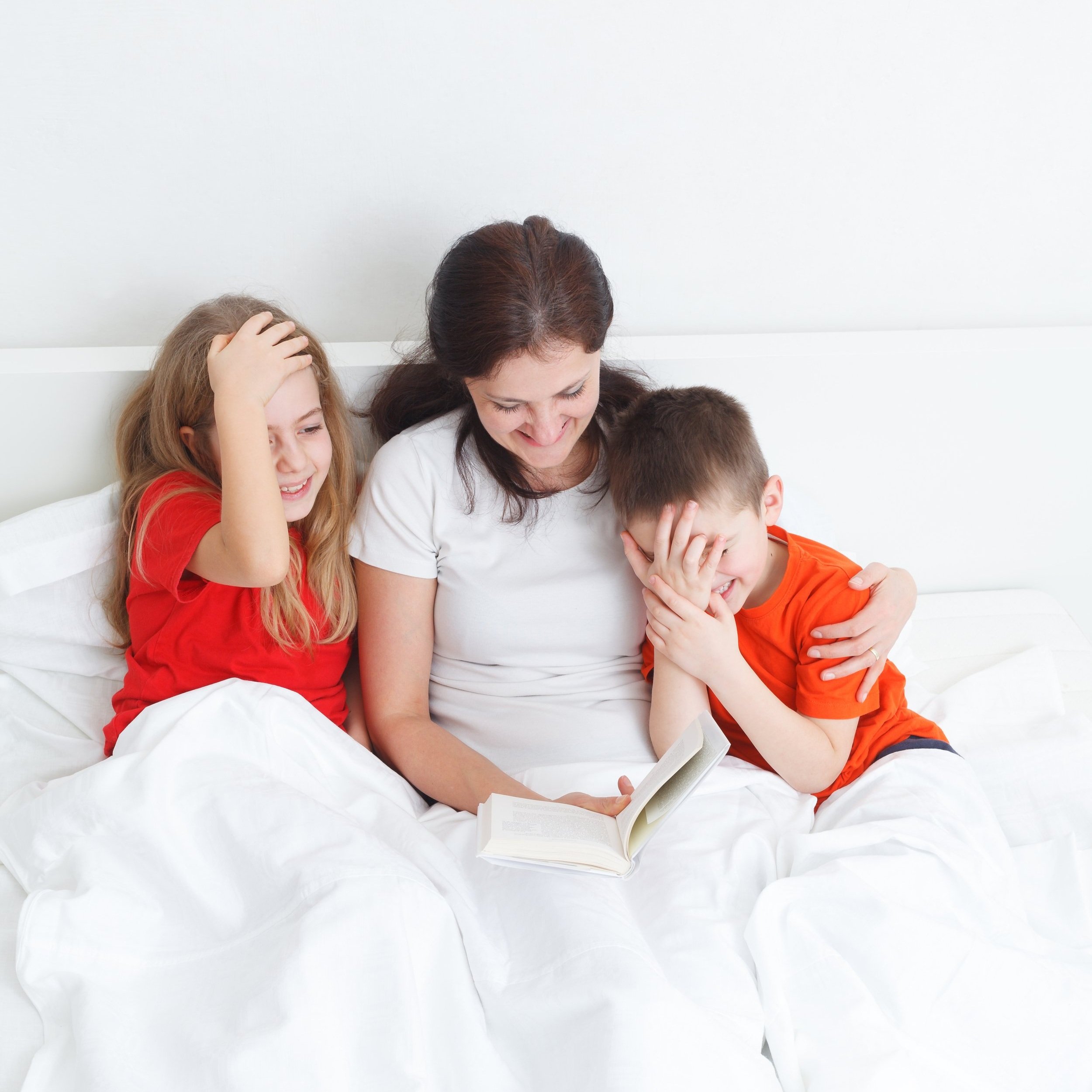


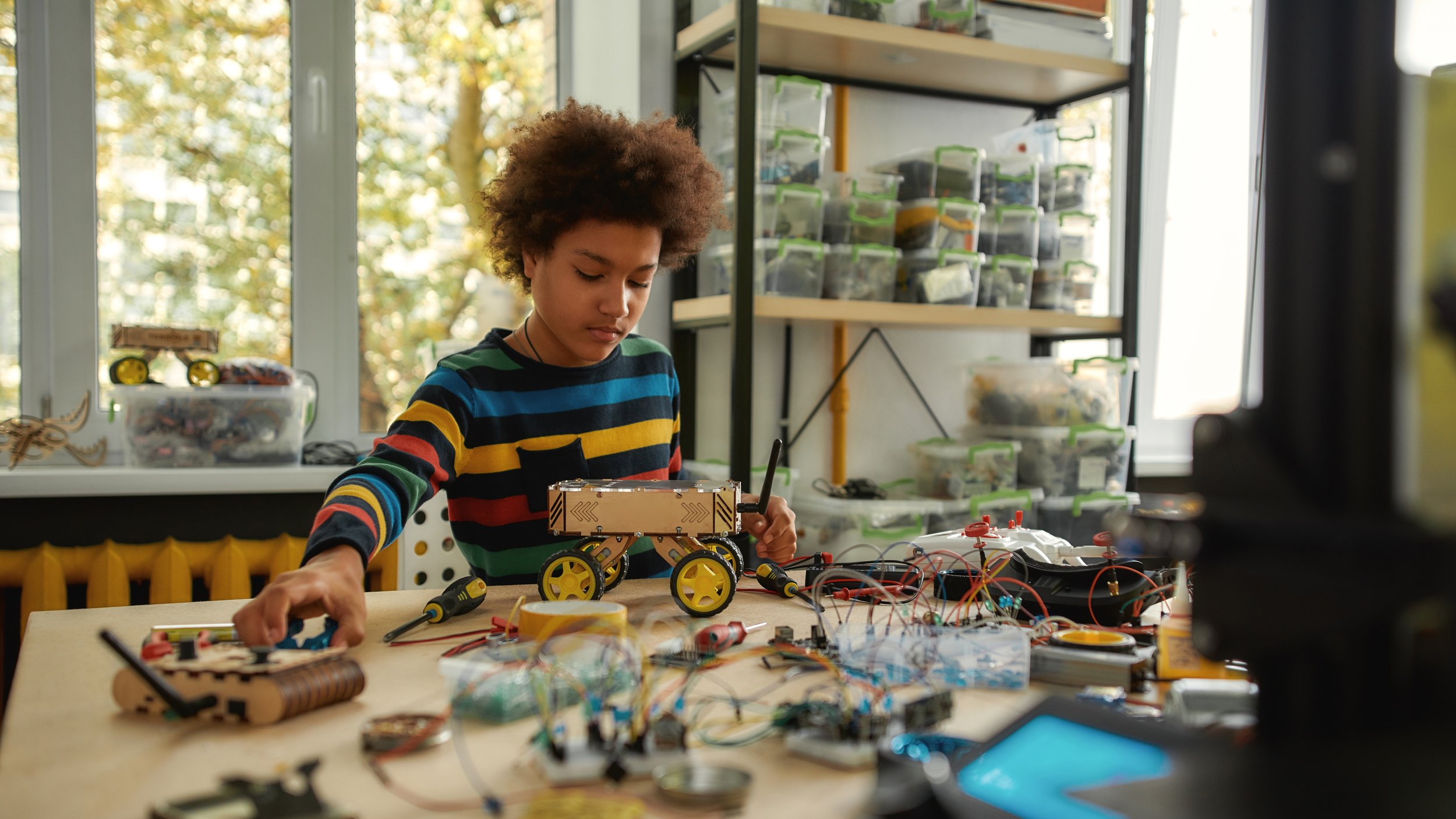
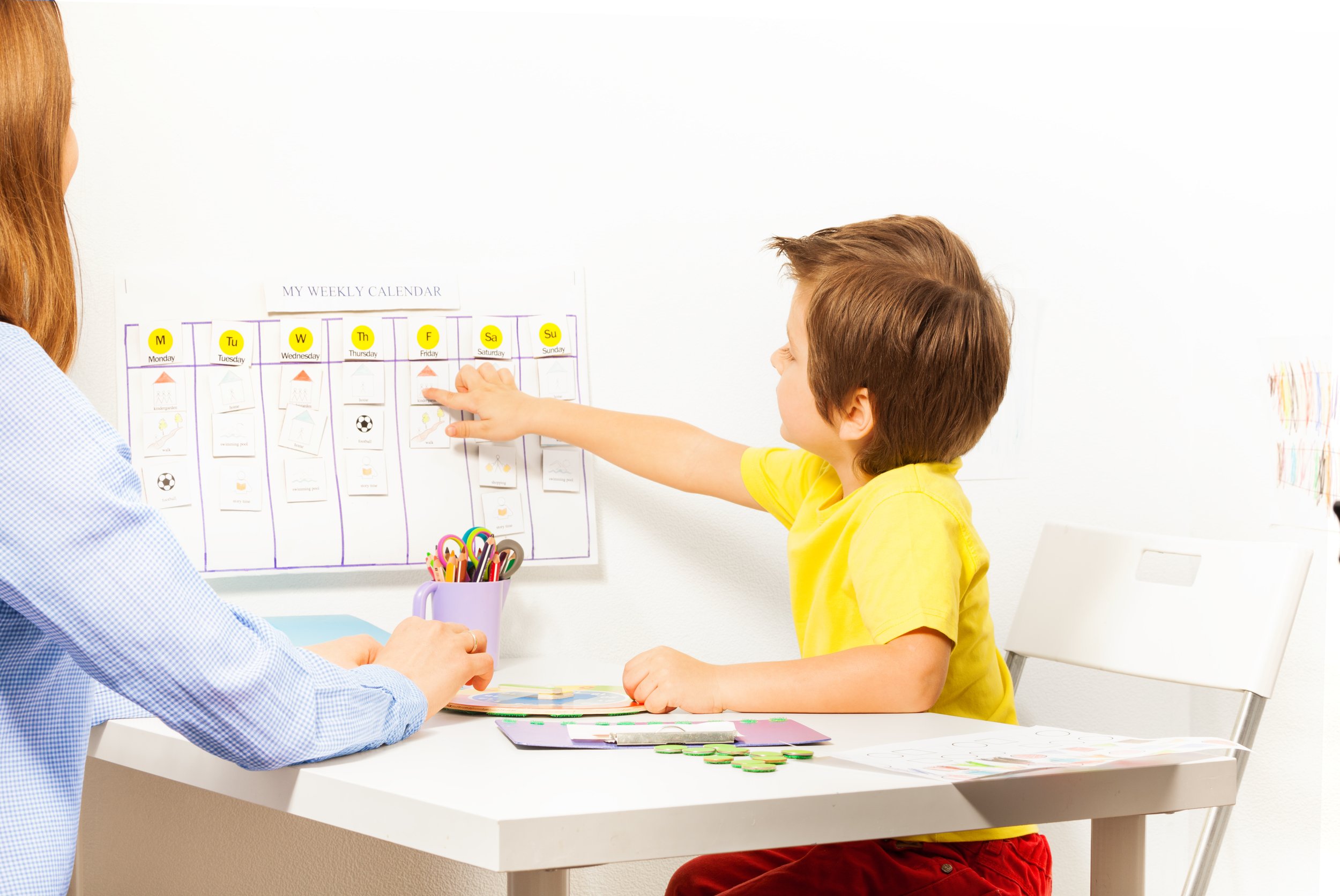




















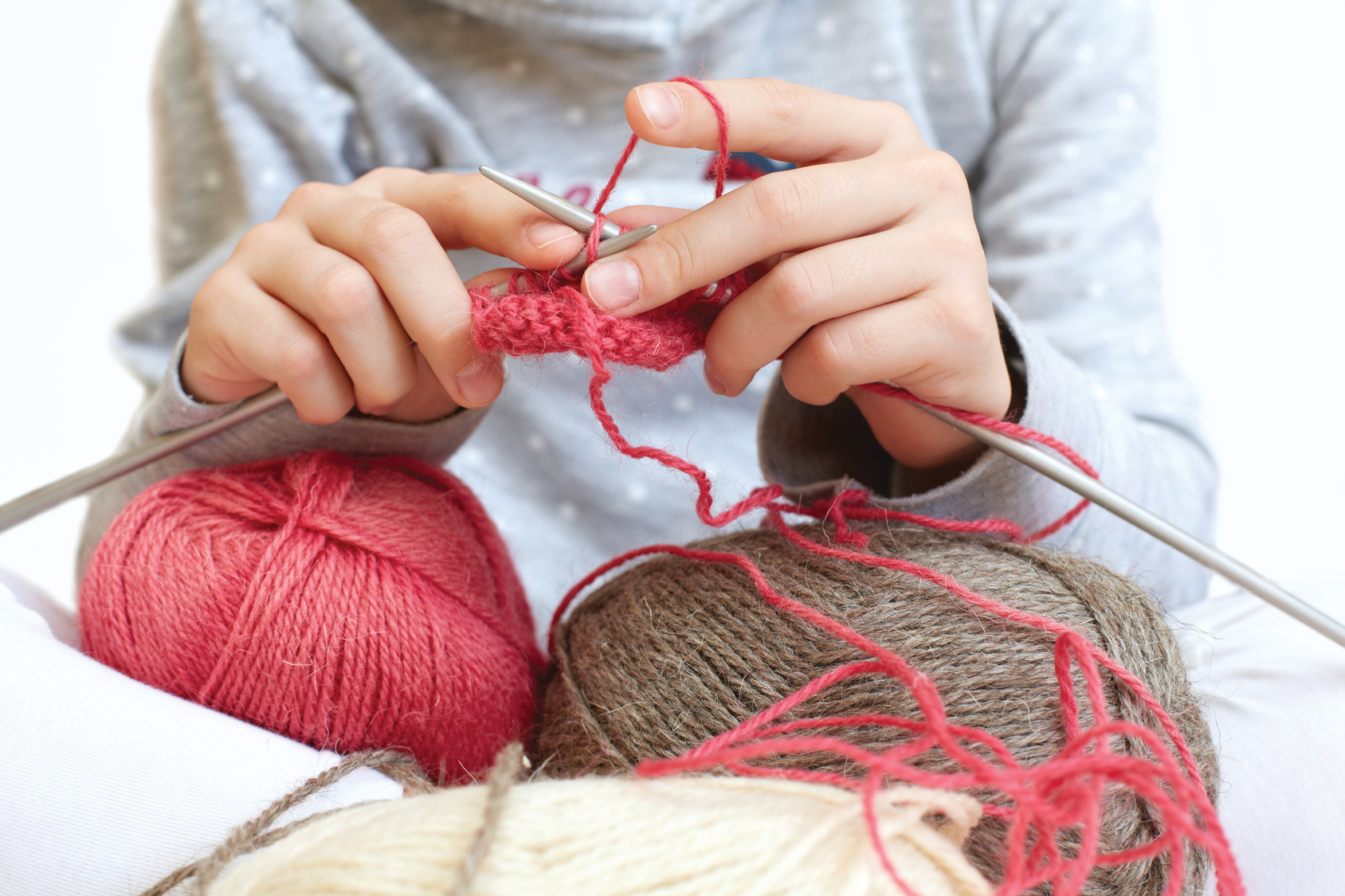
















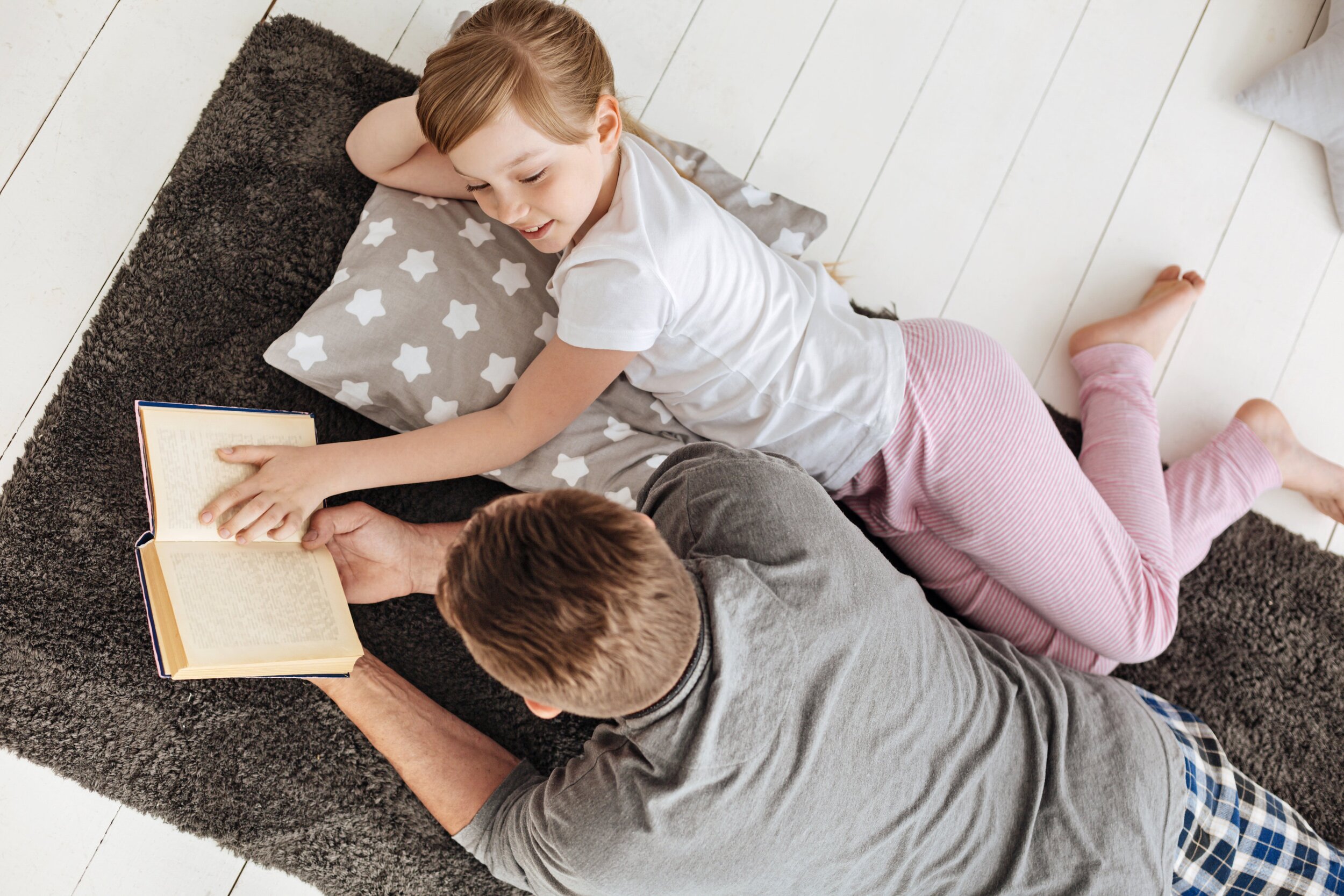





































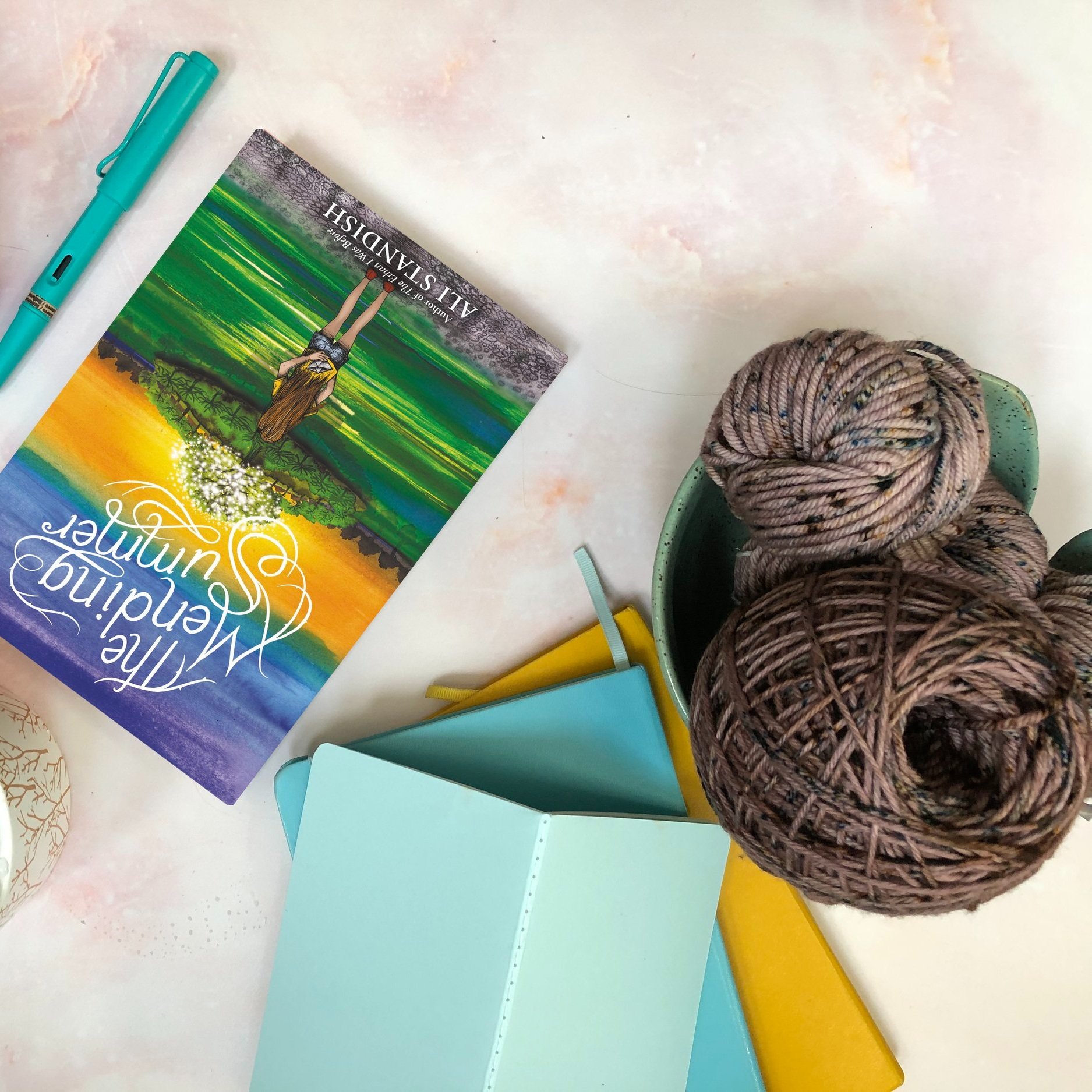























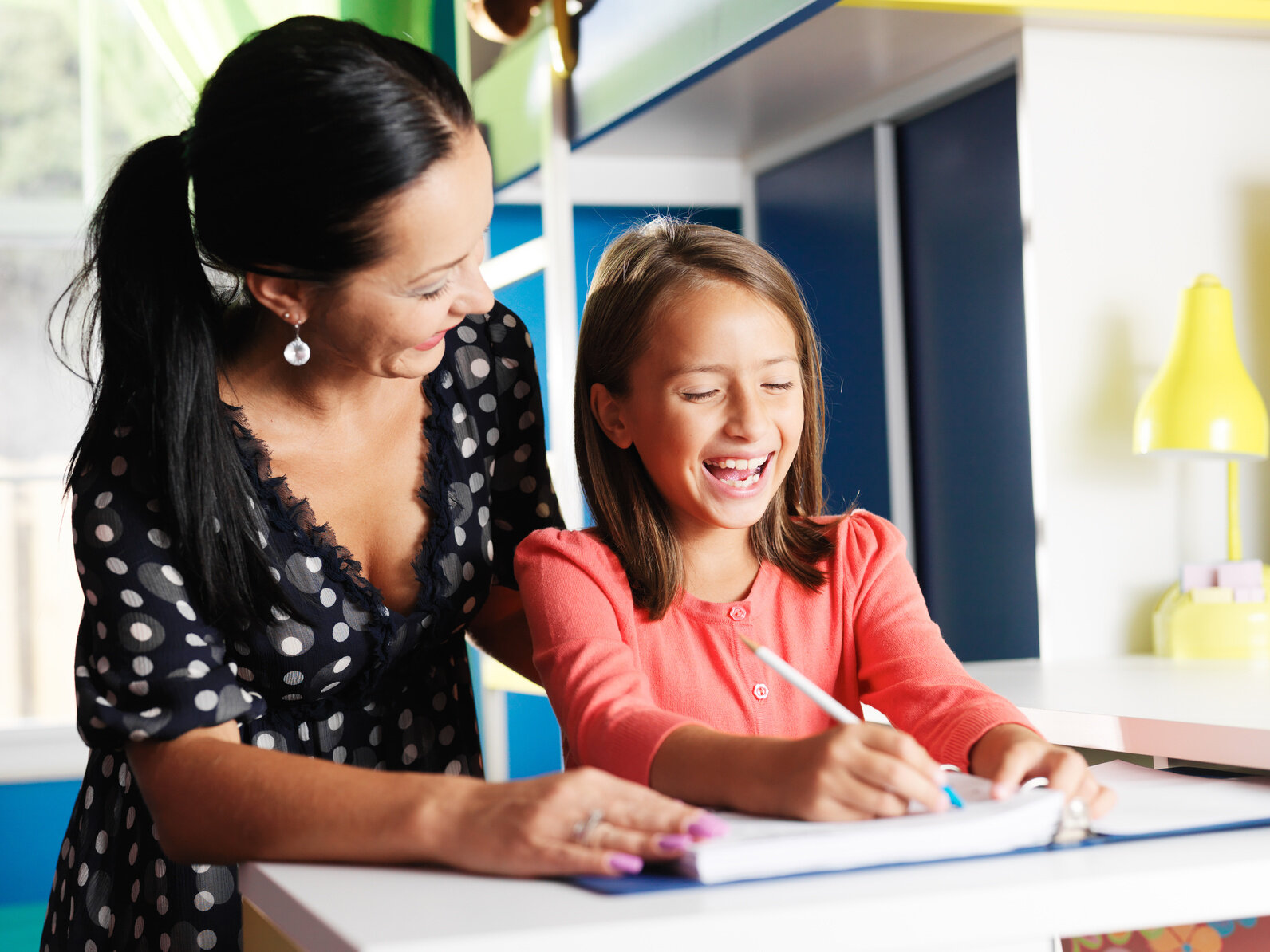
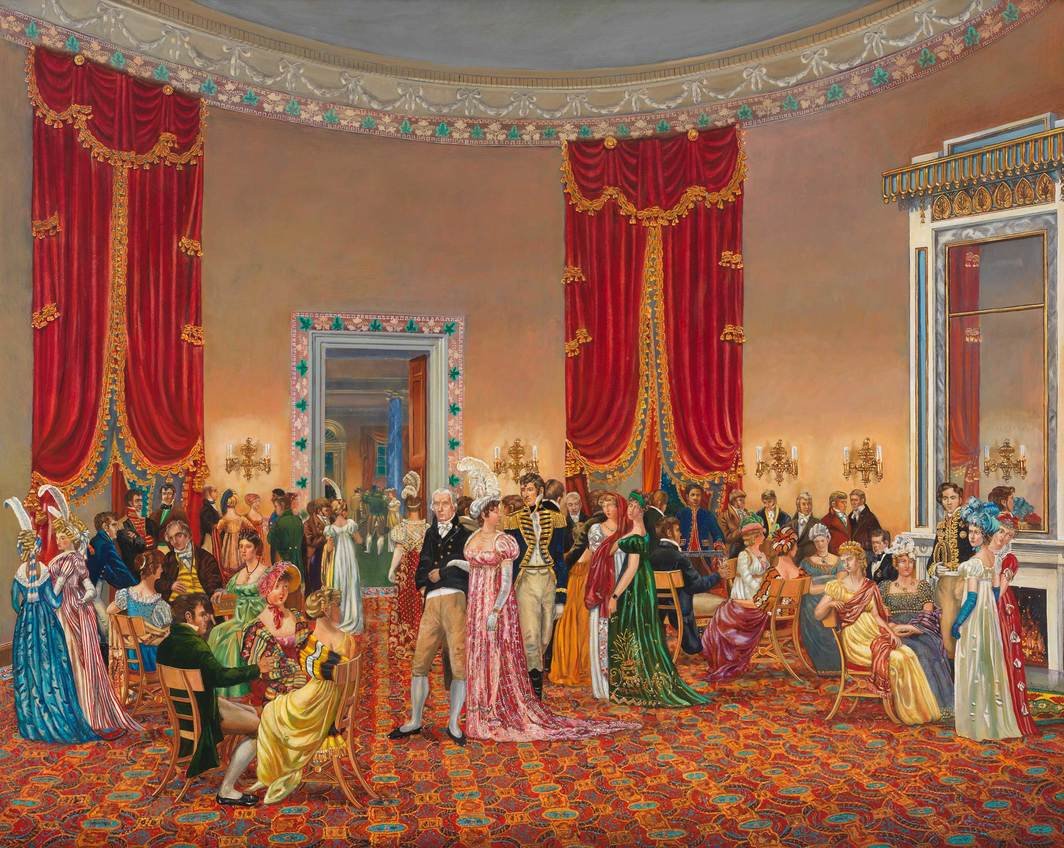







MAGGIE MARTIN writes about empowering kids to be enthusiastic readers and skilled writers at thelanguageartscoach.com. She frequently stays up way too late reading, but she rarely regrets it.